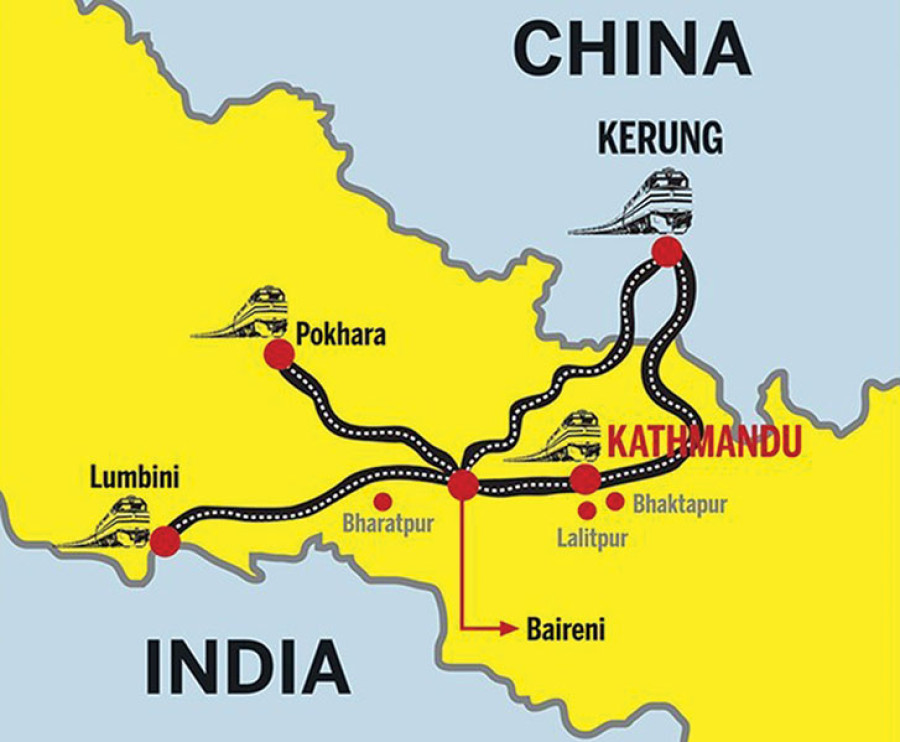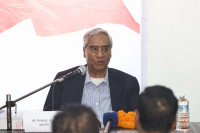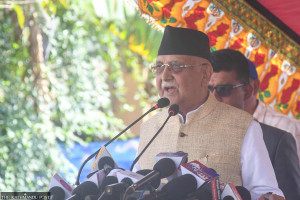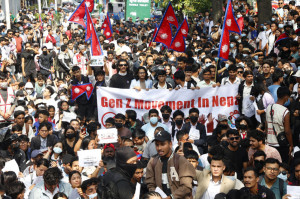Opinion
New trans-Himalayan dictum
Oli’s China visit has overlooked Nepal’s benefit in Trans-Himalayan Multi-dimensional Connectivity Network
Achyut Wagle
The single most important takeaway in Nepal-China relations that transpired during Prime Minister KP Oli’s visit to Beijing last week is arguably a new official dictum, the ‘framework of Trans-Himalayan Multi-dimensional Connectivity Network (THMCN).’ A paragraph in the 14-point joint statement issued on June 21 on completion of Oli’s sojourn reads: “The two sides agreed to intensify implementation of the Memorandum of Understanding on Cooperation under the Belt and Road Initiative (BRI) to enhance connectivity, encompassing such vital components as ports, roads, railways, aviation and communications within the overarching framework.”
Reading between the lines
The THMCN is fairly a new appendage principally designed to bring India onboard regarding the BRI as it is increasingly becoming a ubiquitous foreign policy instrument in the Xi Jinping-ruled China. Chinese Foreign Minister Wang Yi during a joint press conference in Beijing with his visiting Nepali counterpart Pradeep Gyawali last April had elaborated the rationale of the concept for the first time: “We believe that such a network when well-developed can also provide conditions for an economic corridor connecting China, Nepal and India. We hope that such cooperation will contribute to the development and prosperity of all three countries.” The only improvisation in the recent version is that the term ‘transport’ has been replaced by ‘connectivity’.
A major Indian anathema to the BRI has been the component of ‘economic corridors’ that China is promoting—particularly the 62-billion-dollar China-Pakistan Economic Corridor (CPEC). The CPEC runs through Pakistan-occupied Kashmir—which india claims is part of the disputed Jammu and Kashmir territory opening at the port of Gwadar in the Arabian Sea, 2,450 km down south of China-Pakistan border. Citing reason pertaining to sovereignty, India, therefore, has so far refused to endorse BRI. But the compulsions are imminent. China is India’s largest trading partner as the bilateral trade reached historic 85 billion dollars in 2017; and it is growing approximately at 20 percent per year. Interestingly, despite Doklam tensions with China, Indian exports grew by 40 percent compared to previous year totaling at 16.5 billion dollars. Yet, India faces a herculean challenge of reducing the trade deficit which now is around 52 billion dollars a year.
There is strong trade lobby in New Delhi which, given these overarching and inescapable economic realities, thinks that India can only benefit by being a part of the BRI than by opting out of it or by countering it. But the political leadership, even if it underscored these practicalities, is unable to gamble by endorsing a proposal that is linked to an issue as sensitive as the sovereignty involving Kashmir.
Lately, clever leadership in China seems to have weighed the importance of taking India along the BRI and also providing the latter ‘some’ leeway to readjust elbows so as it could fit into the framework. Also, the Indian willingness to join and China’s keenness to incorporate it were evident in the body language of both Chinese President Xi Jinping and Indian Prime Minister Narendra Modi during their most recent meeting at Shanghai Cooperation Organization (SCO) summit in early June held at Qingdao, China. This is exactly the real trigger to an increased emphasis on the THMCN. Oli’s visit was only the chosen moment for its official launch. (Interesting though, Nepal was not invited to the SCO summit despite the fact that it holds a ‘dialogue partner’ status since 2008).
Misplaced priorities
In this backdrop, therefore, Prime Minister Oli’s gasconade in portraying Xi’s willingness to support ‘trans-Himalayan’ railroad construction as the number one achievement of his Beijing visit is grossly a misplaced one. Also, China’s willingness to undertake all important capital intensive projects under the THMCN framework perhaps has more nuanced meaning that Oli, knowingly or unknowingly, has now chosen to drumbeat. India shares 3,500 km long border along the Himalayas in its five states, Jammu and Kashmir, Himachal and Uttarakhand in the west and Sikkim and Arunachal in the east of Nepal, as against 1,415 km of Nepal-China border. No doubt, however, China has found the clownish character in Oli as the most appropriate publicity tool to initiate canvassing for the THMCN.
Nevertheless, the importance of Nepal-India-China (NIC) trilateral cooperation is something Nepal’s politicians have been advocating for long. But India’s nonchalant approach presents itself as the main stumbling block to the very idea of trilateralism. For mercantilist China too, constructing a very costly trans-Himalayan rail and roadways that terminate only within Nepal does not constitute any long-term economic rational; without connecting to the Indian markets in some of the most populous states of Uttar Pradesh, Bihar, Uttarakhand and West Bengal.
It is for this reason, the THMCN and trilateralism are obvious and calculated business strategies for China. It should not be mistaken as China showing mercy on Nepal’s plight of underdevelopment. As it is, even according to the most optimistic views of Oli and his henchmen, if the rail project via Kerung moves as fast and smooth as expected, and more importantly no ‘unexpected’ technical impediments are encountered, it would still take at least seven years for a Chinese rail to arrive in Kathmandu.
Apparently, an agreement meant to initiate a preliminary study on the rail project is perhaps not a reason enough for all the trumpeting and euphoria; obviously not at the cost of other pressing issues pertaining to Nepal-China relations that were effectively overshadowed by it. For example, Nepal’s trade deficit with China is ballooning very fast. In the last fiscal year, Nepal imported goods worth 1.28 billion dollar while exporting goods worth only 0.02 billion. Nepal’s export import ratio with China stands at an alarming 1.5 percent, far worse than that of India which stands at 7 percent. The demand for traditional goods from Nepal—mainly food grains, clothing, construction materials in adjoining Tibet has drastically reduced in the past couple of years after Lhasa got connected with the Chinese mainland through a high-speed rail network.
Let’s assume that rail network gets extended to Nepal as planned. But the pertinent question remains: what will it actually transport back from Nepal if nothing is produced here to export? Even if the THMCN and NIC trilateralism materialises according to the Chinese plan, without our own products to trade and transport with, Nepal may just end up being a mere transit, without any substantial economic gain, between two economic giants who are soon set to cross 100 billion dollar mark of annual bilateral trade. This is exactly where Oli government should have focused instead.




 22.12°C Kathmandu
22.12°C Kathmandu










